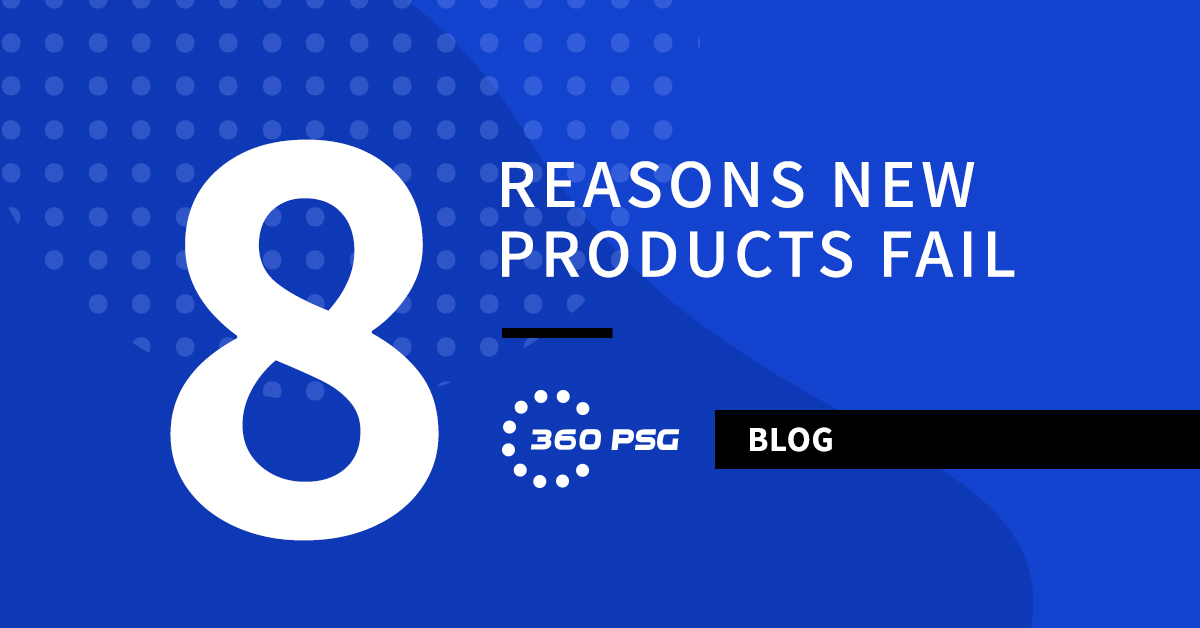Eight Marketing Reasons New Products Fail
 Apple Watch. Nintendo Switch. TikTok. Square payment reader. Dollar Shave Club. iPad. Casper Mattresses. Impossible Whopper. Peloton. Amazon Echo. Disney Plus.
Apple Watch. Nintendo Switch. TikTok. Square payment reader. Dollar Shave Club. iPad. Casper Mattresses. Impossible Whopper. Peloton. Amazon Echo. Disney Plus.
It’s impossible to ignore the success of these products and services. Together, they represent the most successful product launches of the decade. But for every phenomenal success, there are thousands of product failures each year. Here are eight reasons a new product might fail:
Insignificant point of difference
The most significant factor in the success of a new product is having a distinctive point of difference. The new product must be better than those already on the market, and the new product must deliver unique benefits. Research indicates that most American households buy the same 150 products repeatedly. So if you have hopes of your new product sticking around, it’s got to stand out somehow.
Incomplete market and product protocol
A protocol is a product-development statement that identifies four important factors:
- A well-defined target market
- The needs, wants and preferences of specific customers
- The product itself
- How the product will satisfy consumers’ needs.
When the product protocol is underdeveloped, product development inevitably suffers, resulting in products no one actually wants.
Ignoring critical needs factors
Problems with one or two so-called “critical factors” can kill an otherwise high quality product. Despite the popularity of the original Keurig, the company’s venture into chilled beverages, the Keurig Kold, was an abysmal failure, and the product was ultimately discontinued less than a year later. Although the Kold did make great-tasting cold sodas, the machine was too big and the cost per beverage was too high. Failing to address these critical needs caused the Kold to fail.
Bad timing
They say timing is everything. If you introduce a product too early, or too late, or at a time when consumer tastes are dramatically changing, your product isn’t going to do well. The iPad was one of the decade’s most successful product launches, but you probably don’t remember the HP TouchPad at all. That’s because Hewlett-Packard introduced its tablet years after the iPad had already established itself. The HP Tablet lasted all of two months before the company discontinued making it. That’s a lot of wasted time and money.
No economical access to customers
Physical retail space is finite. Every new product displaces some other product. If a company can’t reach its potential customers because of lack of economic access, the product will fail. Considering that there are some 40,000 new packaged consumer goods introduced each year, the competition for shelf space is fierce, and the cost prohibitive. Fortunately, the internet offers a viable alternative to an extent, but customer access of some sort is still critical.
Poor marketing mix execution
There are seven crucial components of the marketing mix:
- Product
- Price
- Promotion
- Place
- Packaging
- Positioning
- People
If any one of these seven factors is ignored or mishandled, the new product is unlikely to be successful.
Lack of market attractiveness
Ideally, a product has a large target market with high growth and real need.However, many times the target market is too small or competitive to make the investment worthwhile. Sometimes niche products can do well, especially luxury goods. But if your target market is small, you run the risk of not being able to generate enough sales.
Poor product quality
If products aren’t thoroughly tested, quality can suffer. And if a product gets a reputation for being made poorly, or worse, unsafe, your product is likely to fail. Addressing inadequate product quality include additional labor, materials and damage control costs. And it still might not be enough. While companies like Tylenol, Samsung, Toyota and Firestone have all weathered significant product quality issues, most companies are less lucky. Brands like iHoverspeed and Tech Drift went belly up after the hoverboard craze proved too hot to handle. Billed as the product of the 2015 Christmas season, the popular self-balancing scooters were prone to catching fire. Multiple companies were forced to issue recalls, and many of them were unable to financially recover.
One of the crucial components of a new product launch is marketing. The 360 PSG digital marketing team is here to help you get the word out about your new product or service. To learn more about how we can create a successful marketing campaign for you, contact our team today.


